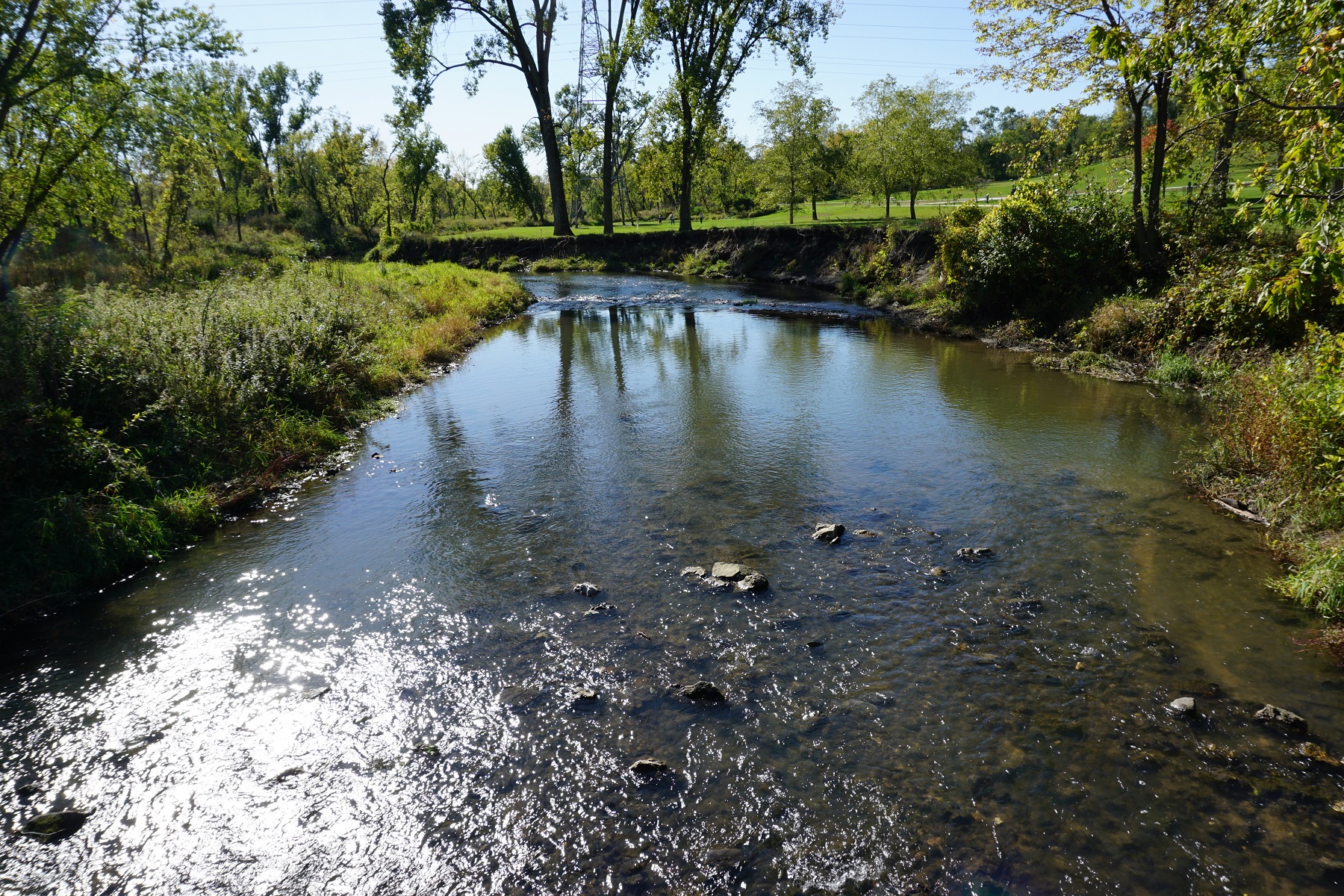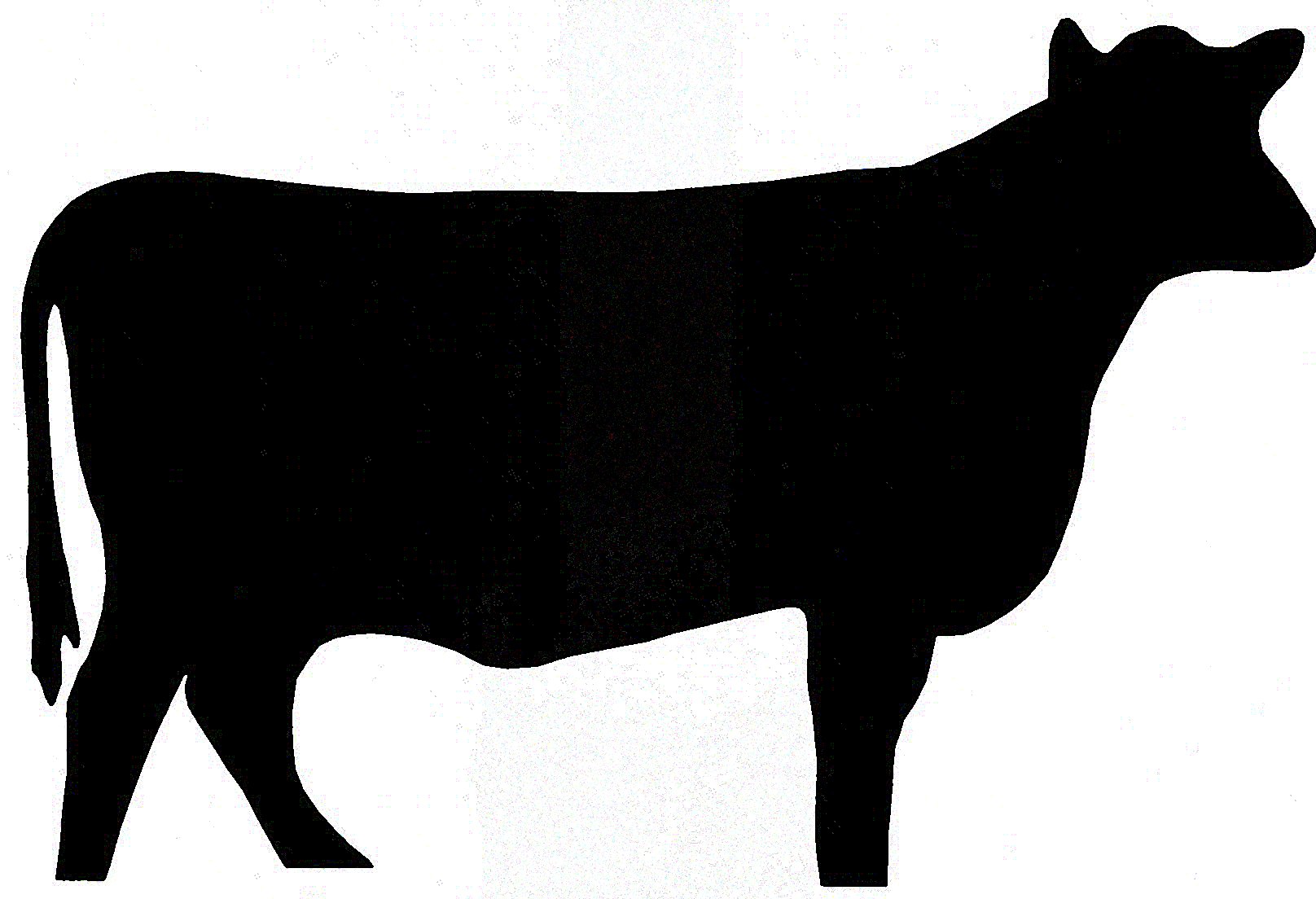United Nations Secretary-General Antonio Guterres addressed the attendees of the COP26 meeting in Glasgow on November 1, 2021, with an inspiring speech. Experts from that speech follow:
“Our addiction to fossil fuels is pushing humanity to the brink. We face a stark choice: Either we stop it — or it stops us. It’s time to say: enough. Enough of brutalizing biodiversity. Enough of killing ourselves with carbon. Enough of treating nature like a toilet. Enough of burning and drilling and mining our way deeper. We are digging our own graves. Our planet is changing before our eyes — from the ocean depths to mountain tops; from melting glaciers to relentless extreme weather events.”
“We face a moment of truth. We are fast approaching tipping points that will trigger escalating feedback loops of global heating. But investing in the net zero, climate resilient economy will create feedback loops of its own — virtuous circles of sustainable growth, jobs and opportunity. We have progress to build upon.”
“The science is clear. We know what to do. First, we must keep the goal of 1.5 degrees Celsius alive. This requires greater ambition on mitigation and immediate concrete action to reduce global emissions by 45 per cent by 2030.”
“The sirens are sounding. Our planet is talking to us and telling us something. And so are people everywhere. Climate action tops the list of people’s concerns, across countries, age and gender. We must listen — and we must act — and we must choose wisely. On behalf of this and future generations, I urge you: Choose ambition. Choose solidarity. Choose to safeguard our future and save humanity, and I thank you.”
Link to see the whole address by Secretary-General Guterres
What you can do to help the environment
- Tell the Iowa Utilities Board that you want them to make public the names of the landowners who are affected by the Summit Carbon Solutions pipeline
- Please sign the Petition to Repeal Iowa's New Voter Laws
- Donate to the Iowa Chapter of the Sierra Club
In this issue of the Iowa Sierran
Water Quality
-
PFAS – toxic “forever chemicals”

-
Another confinement in karst: Siting confinements on karst topography is dangerous
-
Paying for the Nutrient Reduction Strategy – A Nutrient Management Strategy Fee
Voting
Agriculture
Carbon Dioxide Pipelines
Events
Plus
-
Contribute to the Iowa Chapter
-
Volunteer for the Iowa Chapter
-
Calendar of events
-
To see the archive of previous Iowa Chapter newsletters
-
To see the White Pine Needle newsletter
PFAS – toxic “forever chemicals”
PFAS is a serious environmental concern
Environmentalists have become increasingly concerned about a class of chemicals called perfluoroalkyl and polyfluoroalkyl substances, often abbreviated to PFAS. There are thousands of compounds, estimated over 5000, in the PFAS class. PFAS persists in the environment and does not break down. These substances are difficult to dispose of. That is why they are called “forever chemicals”
What’s more, they can be found in human body tissue where they accumulate and are released from the body very slowly. Exposure to PFAS has been linked to kidney and testicular cancers, immune system issues, fertility problems, risks to fetuses, low infant birth weights, low growth rates in children, learning concerns, and increased cholesterol levels. Additionally PFOS has been linked to thyroid hormone disruption.
PFAS chemicals are resistant to water, oil, grease, and heat. These chemicals have been used as fire retardants, in non-stick cookware (such as Teflon), on stain-resistant clothing (such as Goretex) and fabrics (including Scotchgard-protected fabrics), carpets (such as Stainmaster), umbrellas, tents, in food packaging, in cleaning products, in polishes and waxes, in paint, in insulation for wiring, and in fire-suppressing foams. The fire-suppressing foams are used at military installations, fire training centers, airports, and some manufacturing facilities. Airports have used de-icers that contained PFAS. Some industries, such as chrome plating, electronics manufacturing, and oil recovery, use PFAS compounds. They are even found in mascara, long-lasting lipstick, foundations, and shampoo. Some pizza boxes contain PFAS, as well as microwave popcorn bags, candy wrappers, and fast-food wrappers. In other words, they are everywhere.
Studies underway to determine contamination in Iowa
The chemicals have been found in Iowa’s groundwater and surface water. Studies are underway to determine the extent of the contamination in Iowa, in surface waters, in groundwater, and in drinking water.
In 2019, tests at the National Guard base near Sioux City showed high levels of PFAS in the soil, sediment, surface water, and ground water. Also in 2019, tests of the National Guard base near Des Moines showed high levels of PFAS and found indications that a plume of contamination was moving off the base.
United States Geological Survey studying surface waters
The United States Geological Survey collected surface water in 60 streams in Iowa in 2019 and 2020. PFAS was found in one-third of the streams. Most of them had small amounts. Researchers involved with the study reported that the streams with wastewater treatment plant discharges were more likely to contain PFAS. One stream, which is in an agricultural area, had double the level of the federal guideline for drinking water (70 parts per trillion). [1]
Reporting by Tom Cullen of The Storm Lake Times indicated that the tests detected PFAS in locations that the Iowa Department of Natural Resources had not predicted. Cullen reported, “Dana Kolpin, a USGS research hydrologist who was the study’s main author, told The Storm Lake Times the results suggest ‘extensive contamination that’s much more prevalent than previously known.’ He suggests there might be a link between PFAS contamination and nonconventional agricultural practices like biosolid application and irrigation for livestock. The City of Storm Lake’s wastewater treatment plant generates 450 tons of biosolids, byproducts of human waste, each year and sells them to farmers, sometimes at no cost.” [2]
Iowa Department of Natural Resources is testing to determining how extensive the contamination is in Iowa in drinking water sources and finished drinking water
The Iowa Department of Natural Resources is undertaking studies to determine the extent of the contamination in Iowa’s groundwater, surface water, and finished drinking water. The DNR has an action plan for testing drinking water sources across the state. [3] The testing began in October, 2021, focusing on 59 cities, 2 businesses, and 3 rural water systems. [4] The DNR is testing all surface water supplies and systems that rely on shallow alluvial wells. [5] They are testing raw water before it is treated and finished water (which is treated water) for 25 different PFAS compounds. [6]
EPA to engage in a national effort
The federal Environmental Protection Agency (EPA) issued a roadmap to respond to the PFAS contamination. [7] EPA will be implementing the plan from 2021 to 2024. We will be hearing more about the plan, its regulations, and testing in the upcoming months and years. The plan is focused on three areas:
- Researching exposure to PFAS and its toxicity, human health, and environmental effects, plus interventions that are needed
- Restricting PFAS from entering water, air, and land in levels that are adverse to public health and the environment
- Remediation – cleaning up PFAS contamination so that human health and the environment are protected.
Iowa has been given authority to implement the regulations that EPA establishes, such as maximum levels of PFAS in drinking water and regulating industries that release of PFAS into the environment. The Iowa Chapter will be staying on top of these issues and will send out action alerts when we need your assistance.
What if drinking water is contaminated with PFAS?
If drinking water is contaminated with PFAS, there are several options that are recommended by EPA: [8]
- Closing contaminated wells
- Public water departments can blend water from several sources to reduce the amount of PFAS in finished drinking water
- Public water departments can treat the source water with activated carbon or high pressure membrane systems such as reverse osmosis
- It may also be necessary to provide bottled water to residents
- There are some home-installed drinking water systems that removed PFAS from drinking water. In 2021, a well near the Cedar Rapids airport was found with high levels of PFAS. The family using the well was provided with reverse osmosis system which is expected to protect the drinking water.
See our presentation "PFAS - "forever chemicals" are a serious environmental concern"
Footnotes
[1] Jared Strong, “New study finds ‘forever chemicals; in streams across Iowa”, Iowa Capital Dispatch, October 25, 2021. This article has a list of the streams where PFAS was detected.
[2] Tom Cullen, “’Forever’ chemicals widespread in Northwest Iowa”, The Storm Lake Times, October 29, 2021
[3] “PFAS Action Plan”, Iowa Department of Natural Resources, January 23, 2020; see the DNR PFAS website at www.iowadnr.gov/Environmental-Protection/PFAS
[4] For a list of the cities and rural water systems being tested, see Jared Strong, “Drinking water for 59+ cities to be tested for ‘forever chemicals’”, Iowa Capital Dispatch, October 21, 2021
[5] Tom Cullen, “’Forever’ chemicals widespread in Northwest Iowa”, The Storm Lake Times, October 29, 2021
[6] Kate Payne, “Iowa DNR is testing more than 50 public water systems for ‘forever chemicals’ but no plans for private wells”, IPR News, Iowa Public Radio, March 22, 2021
[7] “EPA Takes Action to Address PFAS in Drinking Water”, news release from Environmental Protection Agency, 02/22/2021, www.epa.gov/newsreleases/epa-takes-action-address-pfas-drinking-water
and
“PFAS Strategic Roadmap: EPA's Commitments to Action 2021-2024”, Environmental Protection Agency, www.epa.gov/pfas/pfas-strategic-roadmap-epas-commitments-action-2021-2024
[8] “Fact Sheet PFOA & PFOS Drinking Water Health Advisories”, Environmental Protection Agency, November, 2016
Please sign the petition to Repeal Iowa's New Voter Laws
Despite a historic presidential election turnout in 2020 with both candidates receiving more votes than any other candidate ever, Iowa is one of 14 states that passed legislation in 2021 making it harder to vote, easy to alienate or disqualify voters, and more difficult to administer. 
We're partnering with the League of Women Voters Iowa to collect petition signatures to repeal Iowa's new voting laws. We urge Iowa lawmakers to repeal sections of Senate File 413 and Senate File 568, which were signed into law in 2021. We believe voting should be easy to do and less challenging to administer. Please sign the Petition to Repeal Iowa's New Voter Laws to ask Iowa lawmakers to repeal sections of Senate file 413 and 568.
RESTRICTIONS IN IOWA’S NEW ELECTION LAWS
- Invalidates some mail-in ballots that, even when mailed promptly, cannot be returned before polls close
- Impedes voting by medical and other workers with 12-hour shifts by closing the polls earlier on primary and general election days
- Obstructs returning absentee ballots by limiting the use of ballot drop boxes to one per county, regardless of population, and by unnecessarily restricting who may return them
- Drastically shortens the early voting period from 29 days to 20 and needlessly limits ballot-request periods
- Invites interference in our elections by allowing political parties to challenge Iowa elections in court
- Limits county auditors’ abilities to adapt to local conditions and criminalizes good-faith errors
- Provides less time for voter registration and moves voters who miss any general election to an “inactive” list
Photo is Indian Creek in Marion, Iowa.
Update on Summit Carbon Solutions and Navigator CO2 pipelines
Submit Carbon Solutions carbon dioxide pipeline
The Iowa Utilities Board (IUB) has not made a decision on whether to publish the names of the landowners who are targeted to host the Submit Carbon Solutions carbon dioxide pipeline. We urge you to write a comment to the Iowa Utility Board to request that the list of landowners who will be impacted by pipeline construction be made public. Click this link.
-
Select “HLP-2021-0001 (Summit Carbon Solutions LLC, Petition for a Hazardous Liquid Pipeline Permit)”
-
Submit this comment or write your own:
"I object to the list of affected landowners in this case being kept confidential. Keeping the names confidential prevents the landowners from contacting each other and organizing a unified response to the proposed pipeline. Despite the reasons claimed by Summit for keeping the names confidential, it is obvious that the real reason is to prevent the landowners from defending themselves. Summit has given no reason why disclosure of the names would give advantage to competitors. And disclosure would serve the public purpose of allowing the landowners to effectively present their interests to the Board."
Filing objections with the IUB is good to do. Submitted by a landowner impacted by the Summit Carbon Solutions Pipeline.
Objections may be made by anyone, and filed as often as desired. For a long time now, we have been filing requests for the disclosure of landowners’ names.
A time after we continued in that effort, the Department of Justice, Office of Consumer Advocate joined us in agreement, by filing their own request for release of the list of landowner names. There was no response from Summit. So, we organized and made a concerted effort in filing those objections again - all at the same time - on the same day.
Summit was shaken enough by the latter that they finally responded by posting a filing to the IUB. And it was a weak counter too. They even made up a new, fallible excuse to keep the landowners’ names to themselves. They continued to deny everyone’s requests and said that rather than releasing the names, they would rather withdraw the whole landowner list from officials who had it. Since it was filed with the Iowa Utilities Board, it is now a public record and Summit cannot withdraw it.
As the objections posted with the IUB & Summit’s responses reflect, Summit is denying us the power of open communication and organized efforts from a greater number. They seem to know that they can’t stand against us when we stand united as many. On more occasions than those described above, Summit has shown lack of transparency and unfair bias. Their responses to objections reflect that they’re trying to prevent us from helping each other by uniting in our efforts. And it’s just one example of how vital it is for us to do just that, unite, and in an organized fashion.
All objections have been helpful and are important. And we are going to need to find more people to stand together in additional defensive efforts as well. Summit is not going to make things easy, but if we work together, we can win. There are more of us than them.
Navigator carbon dioxide pipeline informational meetings are scheduled
The public informational meetings about the Navigator carbon dioxide pipeline are now scheduled. We urge you to attend theses meetings. The schedule for the Navigator Pipeline informational meetings is:
- Lyon County: November 29, noon – Forster Community Center, 404 First Ave., Rock Rapids
- Plymouth County: November 29, 6 p.m. – Le Mars Convention Center (lower level), 275 12th St. S.E., Le Mars
- Cherokee County: November 30, noon – Aurelia Community Center, 235 Main St., Aurelia
- Woodbury County: November 30, 6 p.m. – Sioux City Convention Center (Rooms A & B), 801 Fourth St., Sioux City
- O’Brien County: December 1, noon – Crossroads Pavilion Event Center (Great Hall), 301 34th Ave., Sheldon
- Osceola County: December 1, 6 p.m. – 9th Street Center, 418 Ninth St., Sibley
- Dickinson County: December 2, noon – Dickinson County Community Center, 1602 15th St., Spirit Lake
- Emmet County: December 2, 6 p.m. – VFW Hall, 314 S. First St., Estherville
- Kossuth County: December 3, noon – Eagle Center (banquet room), 401 Smith St., Lakota
- Delaware County: December 6, noon – The Gathering Place, 1711 N. Second St., Manchester
- Linn County: December 6, 6 p.m. – Veterans Memorial Building (coliseum), 50 Second Ave. Bridge, Cedar Rapids
- Clinton County: December 7, noon – Wild Rose Convention Center & Ballroom, 777 Wild Rose Drive, Clinton
- Cedar County: December 7, 6 p.m. – Cedar County Fairgrounds (Matthews Building), 220th Street, Tipton
- Des Moines County: December 8, noon – LOFT Events, 416 Jefferson St., Burlington
- Lee County: December 8, 6 p.m. – Small Grand Things, 1903 West Point Road, West Point
- Van Buren County: December 9, noon – Bonaparte Opera House, 614 First St., Bonaparte
- Jefferson County: December 9, 6 p.m. – The Walton Club, 2265 Walton Lake Road, Fairfield
- Wapello County: December 10, noon – Bridge View Center (conference rooms), 102 Church St., Ottumwa
- Clay County: December 13, noon – Clay County Regional Events Center, 800 W. 18th St., Spencer
- Buena Vista County: December 13, 6 p.m. – Alta Community Center, 28 N. Lake St., Alta
- Pocahontas County: December 14, noon – Rolfe Community Center, 319 Garfield St., Rolfe
- Webster County: December 14, 6 p.m. – Best Western Starlite Village, 1518 Third Ave. N.W., Fort Dodge
- Hamilton County: December 15, noon – Briggs Woods Conference Center (Van Diest Supply Co. meeting room), 2501 Briggs Woods Trail, Webster City
- Hardin County: December 15, 6 p.m. – Ellsworth Community College (auditorium), 1100 College Ave., Iowa Falls
- Franklin County: December 16, noon – Franklin County Convention Center, 1008 Central Ave. W., Hampton
- Butler County: December 16, 6 p.m. – Greene Community Center, 204 W. South St., Greene
- Floyd County: December 17, noon – Floyd County Fairgrounds (Youth Enrichment Center), 2516 Seven Mile Road, Charles City
- Benton County: January 3, noon – Norway Community Center, 210 South St., Norway
- Iowa County: January 3, 6 p.m. – Price Creek Event Center, 4709 220th Trail, Amana
- Keokuk County: January 4, noon – Sigourney Public Library, 720 E. Jackson St., Sigourney
- Poweshiek County: January 4, 6 p.m. – Grinnell College (Joe Rosenfield Center), 1115 8th Ave., Grinnell
- Mahaska County: January 5, noon – George Daily Community Auditorium, 1800 N. Third St #2, Oskaloosa
- Jasper County: January 5, 6 p.m. – DMACC Newton Campus (Conference Center auditorium), 600 N. Second Ave. W., Newton
- Story County: January 6, noon – Gateway Hotel & Conference Center (Prairie Ballroom), 2100 Green Hills Drive, Ames
- Boone County: January 6, 6 p.m. – DMACC Boone Campus (auditorium), 1125 Hancock Drive, Boone
- Polk County: January 7, noon – Iowa State Fairgrounds (Oman Family Youth Inn), 3000 E. Grand Ave., Des Moines
- Virtual meeting: January 19, 6 p.m.
Another confinement in karst: Siting confinements on karst topography is dangerous
The Sierra Club has been alarmed by the livstock industry siting their facilities on land with karst topography.

Karst “describes topography formed by the dissolving action of groundwater on underlying carbonate bedrock and characterized by sinkholes, caves, underground drainage, and springs”.[1] An area with karst can be riddled with fissures and crevices in the underlying rocks. The landscape where karst is found is somewhat like Swiss cheese.
The big problem is that the dissolving action can create sinkholes which are created when the overlying soil and rock collapses, creating a depression. As you can imagine, anything built on top of the sinkhole can also collapse. That means that manure storage structures can crack, be torn apart, or collapse which would release manure into the landscape.
The manure can travel over the surface and into rivers, streams, and lakes. Or it can move through the soil into the groundwater and then slip through the fissures and crevices. The manure can contaminate underground water sources and springs.
Obviously it is extremely risky to build a livestock operation over karst topography. Yet, two large projects are doing that – Supreme Beef in Clayton County and Johnson Brothers in Mitchell County.
Supreme Beef is located near a trout stream and in an area with a shallow aquifer. The Sierra Club is continuing its battle to project Bloody Run Creek by challenging the permit in Polk County Court.
A second controversial project is before the Department of Natural Resources (DNR) because Tim and Joe Johnson, owners of a feeder calf operation called Johnson Brothers, built an underground manure storage tank in karst without a permit. The Johnsons claimed that they did not know they needed a permit. Once the DNR became aware of the facility, DNR proposed that the Johnsons install a water monitoring system, which would require them to monitor the groundwater for 6 years. However, the Johnsons pushed back because it would cost $100,000. As Erin Jordan of the Cedar Rapids Gazette reported, Tim Johnson “thought installing the tank would fix a problem, which was not having a place to put manure during the winter months when Iowa law bans application on frozen ground.” The Johnsons were caught applying manure to frozen ground and not having a manure management plan, which resulted in a DNR complaint in February 2, 2016, and a consent decree in 2020. The DNR requested that the Johnsons hire a licensed engineer to investigate lowering the groundwater around the tank. Again the Johnsons are pushing back because of the cost and because they have other structures near the tank, including other manure pits. So now the DNR is proposing that the Johnsons be required to monitor neighboring wells. The DNR is also considering that the Johnsons not be allowed to use the tank. In the meantime, the Johnsons reduced the number of cattle to fewer than 500, which is an attempt to be classified as a small animal feeding operation which, thus, reduces the regulations put on them.[2] [3]
However, the regulations for manure management plans are based on the capacity of animals that can be housed in the buildings, not how many animals are currently living in the building.
The DNR should not have allowed the Johnsons to refuse to do what needed to be done simply because it would be too expensive. The Johnsons should have been required to follow the rules or leave the business if they couldn’t afford to comply. Then DNR’s duty is to protect the environment, not placate the producers.
Unfortunately, it appears that the livestock industry believes that Iowa is the wild wild west. They don’t think they have to comply with Iowa laws and regulations, they think they can do what they want and nothing will happen, they plead ignorance in spite of outrage across the state about polluted water. And they don’t believe in protecting Iowa’s waters. The DNR needs to come down hard on livestock operations that are not complying with the rules.
[1] Jean Cutler Prior, Janice L. Boekhoff, Mary R. Howes, Robert D. Libra, Paul E. VanDorpe, “Iowa’s Groundwater Basics”, Iowa Department of Natural Resources, 2003, Page 74
[2] Erin Jordan, “Manure tank without permit could prove costly”, Cedar Rapids Gazette, November 13, 2021
[3] Iowa Department of Natural Resources Administrative Consent Order, Case 2020-AFO-32, In the Matter of JT Enterprises, LTD, AFO Facility ID 68747, signed December 10, 2020
Victory! Pattison Sand Abandons Plans to Export Water
Throughout 2020, Pattison Sand Company in Clayton County, Iowa, made several attempts to gain a permit to export water from the Jordan Aquifer to locations out west. Pattison Sand has officially abandoned their efforts to obtain the permit from the Iowa Department of Natural Resources.
Thanks to hundreds of Sierra Club Iowa Chapter members who wrote letters, spoke out and submitted comments, we successfully pressured Pattison Sands to abandon their plans. Thank you to everyone who took action.
A couple years ago, Pattison Sand Company applied to the Iowa Department of Natural Resources (DNR) for a permit to withdraw millions of gallons of water from the Jordan Aquifer, the source of water for half a million Iowans. Pattison then would sell the water to entities outside the state of Iowa, shipping the water via rail cars. The DNR denied Pattison’s request, so Pattison filed an appeal to an administrative law judge. The Iowa Chapter moved to intervene in that proceeding. A hearing on the appeal was originally scheduled to begin on November 9, 2020. However, before the hearing, Pattison Sand requested that their appeal of the denial of its states be suspended for a year.
The reason for the suspension was that Pattison Sand claimed that a commodity exchange for water was being created and Pattison had become unsure whether the exchange will be created. Further Pattison Sand was concerned that the exchange could make Pattison’s plan to export water uneconomical; in that case Pattison would abandon its plans.
Now Pattison Sand has officially abandoned its plans and dismissed its appeal.
The Sierra Club is pleased with this decision. It wouldn't have happened with out the hard work of Sierra Club Iowa Chapter members across the state.
Iowa's Redistricting Plan 2 signed into law

Every 10 years, the legislative districts are redrawn. On October 21, 2021, The Legislative Services Agency introduced a new set of maps called Plan 2. The governor signed the maps into law. The maps lay out the districts for each US Representative plus each Iowa House and Senate member based on the recent census data. See Redistricting Plan 2 Maps. The new maps will be used in the 2022 elections.
Join us for interesting and informative webinars
Lunch and Learns
Every Friday at noon, we do a Lunch and Learn livestream. See us on Facebook at "Sierra Club Iowa Chapter". These will be recorded so you can watch them anytime. Topics will be selected based on what is happening during the week and will be announced the day before the livestream. During the legislative session, we cover issues coming before the Iowa legislature.
In case you missed our past webinars and lunch and learn sessions, you can still see them.
We hope you can join us.
Planning for the Future Beyond Ethanol
As painful as it may be, it is wise to plan for the future in the event of significantly reduced demand for ethanol. As more electric vehicles, more hybrid vehicles, and more energy efficient cars and trucks are driven throughout the United States, the demand for ethanol will significantly decline. The ethanol industry is already declining.
Over half of Iowa’s corn crop is used in producing ethanol. “Iowa leads the nation in ethanol production, with 57 percent (1.5 billion bushels) of the corn grown in Iowa going to create nearly 27 percent of all American ethanol.”[1] If the demand significantly declines, then there will be a glut of corn, resulting in lower prices for the corn. That can be devastating to farmers. We want to ensure that Iowa farmers have a future that avoids bankruptcies, farm foreclosures, and ruptured lives. The shifts happening in the ethanol industry and the side-effects on the farmers are difficult to think about. But we do need to be prepared. Throughout our history, businesses and industries have faded away over time – landline phones, mainframe computers, punch cards, photographic film, buggy whips, and so on. Just like those industries morphed into new businesses or just faded away, the prospect of ethanol might not be rosy. The ethanol industry has been disappointed by cellulosic ethanol sales that just didn’t pan out. That is where thinking and planning about what is beyond ethanol comes in.
The ethanol industry has great hopes that it can keep demand for its products high:
- The industry has great hopes for increasing the demand for higher blends of ethanol used in trucks and cars.
- The industry also has great hopes that the western states, particularly California, Oregon, and Washington, will mandate greater blends of ethanol in their transportation fuels. The industry has great hope that California will declare ethanol to be a low-carbon fuel, especially if the ethanol plants sequester the carbon that is emitted during the manufacturing processes.
- The industry is also hoping that ethanol can be successfully adopted in aviation fuels.
But what if the hopes of the ethanol industry are dashed? It won’t be just the ethanol industry that declines; it will be the farmers producing the corn for the ethanol industry. Nobody wants to see the farmers suffer. So what should we, as a state, be doing to provide contingencies in the event that demand for ethanol continues its decline? Here are some policies that need to be pursued:
- The Iowa Department of Agriculture and Land Stewardship should establish a department that studies what directions farmers should move should ethanol continue its decline.
- The department should develop of plan for dealing with significant declines in ethanol demand.
- The department should develop policies and incentives related to idling less productive land and putting it into CRP.
- The department should create demonstration projects that can be used to train farmers on good practices.
- Iowa Department of Agriculture and Land Stewardship should establish financing to assist farmers in making the transition and implementing the changes.
- The Department of Agriculture should consider increasing incentives for on-farm practices to reduce nutrients leaving the farm fields, including edge-of-field practices, grass waterways, and stream buffers.
- Farmers should be encouraged to include additional crops in their rotations. There may be new opportunities for Iowa farmers, including growing more fruits and vegetables. Water shortages in western states may result in shifting fruit and vegetable production to the Midwestern states, providing a perfect opportunity for Iowa farmers.
- The Department of Agriculture, along with Iowa Economic Development, should develop new industries to make products from Iowa farm products, including hemp.
It is painful. But with an industry that involves so many people across the state, it behooves us to strategically think about a future without ethanol.
Paying for the Nutrient Reduction Strategy – A Nutrient Management Strategy Fee
It is estimated that implementing the nutrient management strategy will require $5 billion.
Last month, we suggested that the $1 billion surplus in Iowa's treasury be used as a down-payment on the Nutrient Reduction Strategy. See the article from last month. Since releasing the draft Nutrient Reduction strategy in 2012, the Iowa Department of Natural Resources and Iowa Department on Agriculture and Land Stewardship has lagged in implementing the strategy. Along with lack of will to implement the proposals, implementation efforts have been plagued by the lack of financial resources.
This month, we are going to discuss a Nutrient Management Strategy Fee. The fee would be assessed for every animal unit raised in a confinement where a Nutrient Management Plan or a Manure Management Plan must be filed with the Iowa Department of Natural Resources. Using readily available sources of information, and given a 15-year window, the fee would be $29.96 per animal unit per year. A steer is 1 animal unit; a hog is .4 of an animal unit. The proposal is that the integrator, who is the owner of the animals, is the party responsible for paying the nutrient management fee. In other words, the polluter pays.
Evaluation of the Problem
We have all heard of the phrase, “the polluter should pay”. Those who live in urban areas pay for the sewage treatment plant to keep nutrient pollution out of the processed wastewater. Today manufacturers are assessed a fee for each ton of nitrogen fertilizer that they manufacture. That fee is deposited in the groundwater protection fund, where the funds are used to protect Iowa’s groundwater. [1]
Unfortunately there is a group of polluters that is not assessed a fee to deal with their pollution - the owners of livestock raised in animal feeding operations (concentrated animal feeding operations, or CAFOs). Under the CAFO model, the animals are owned by the integrator. The integrator contracts with the operator to raise the animals and take care of the pollution. The integrator makes the decisions, including selecting where to put the CAFO – which watershed, county, community, neighborhood; sells the animal to the slaughterhouse or owns the slaughterhouse; provides feed; and sets the rules on how the animals are to be taken care of. The operator feeds the animals, disposes of the manure and deceased animals, and provides the buildings.
Every large and medium-sized animal feeding operation must file either a Manure Management Plan or a Nutrient Management Plan with the Iowa Department of Natural Resources (DNR). They have to be updated every five years. When a Manure Management Plan or Nutrient Management Plan is filed, the owner/operator must list species of animal, plus the number of animals and animal units that will be housed in the facility.
Part of the DNR regulations is a concept called an animal unit. The intent of the animal unit is to set a value for each animal species that equates the amount of manure each animal excretes in relationship to the other species. A slaughter or feeder steer or heifer is given the animal unit of 1, while a finished market hog is given the animal unit of .4 which means that a market hog generates .4 of the manure as a feeder cow.
The United States Department of Agriculture publishes an inventory of the animals growing in each state, including Iowa. [2] Not all animal species are tracked, nor are the animals raised in animal feeding operations counted separately from those not raised in animal feeding operations. However, most of the pigs, chickens, turkeys, and cattle in Iowa are raised in animal feeding operations, either in an enclosed building or an open feedlot.
Table 1 – Total Animal Units in Iowa. Table 1 shows the animal units identified in the Iowa Department of Natural Resources regulations, the inventory of animals counted by the United States Department of Agriculture, and a calculation of the total animal units living in the state.
|
Animal Species |
animal unit factor |
inventory of animals |
total animal units = factor * inventory |
|
Slaughter or feeder cattle |
1 |
1,380,000 |
1,380,000.00 |
|
Mature dairy cattle |
1.4 |
218,000 |
305,200.00 |
|
Gestating sows |
0.4 |
2,150,000 |
860,000.00 |
|
Finished (Market) hogs |
0.4 |
17,700,000 |
7,080,000.00 |
|
Turkeys 7 lbs or more |
0.018 |
11,700,000 |
210,600.00 |
|
Broiler/Layer chickens 3 lbs or more |
0.01 |
58,698,000 |
586,980.00 |
|
Broiler/Layer chickens less than 3 lbs |
0.0025 |
13,185,000 |
32,962.50 |
|
totals |
|
10,455,742.50 |
Nutrient Management Strategy Fee
Given the information that is already collected on the Manure Management Plans and the Nutrient Management Plans, it would be very easy to use those animal units to assess a Nutrient Management Strategy Fee each year for the animals living in the animal feeding operation.
Table 2, below, shows how much would be needed in a Nutrient Reduction Strategy fee
|
Total animal units – slaughter or feeder cattle, mature dairy cattle, finished (market) hogs, gestating sows, broiler/layer chickens, turkeys 7 pounds or more |
10,455,742.50 |
|
Amount of money to be collected annually for the next 15 years to reach a $5 billion investment |
$333,333,333.33 |
|
Annual public investment on the Nutrient Reduction Strategy, using the 2019 amount [3] |
$20,120,000 |
|
Annual amount to be collected by the Nutrient Reduction Strategy fee |
$313,213,333.33 |
|
Amount to be collected annually for each animal unit |
$29.96 |
- It makes sense that the owner of the animals – the integrator – pay the Nutrient Management Strategy Fee. In other words, the integrator should pay to internalize the costs of cleaning up the manure and its constituent nutrients that are entering Iowa’s waterbodies.
- It also makes sense that the owner not be allowed to pass that fee to the operator who is contracted to raise the animals and take care of the manure, all the while most of the profits go upstream to the integrator. It makes sense that the consumer not be charged for the Nutrient Management Strategy Fee.
- The fee is simple and easy to calculate.
- It is a simple and easy way to assess the fees and to collect those fees.

- The fees collected would be used to implement the Nutrient Reduction Strategy and could fully fund the Strategy in a reasonable period of time.
It is obvious that Iowans will need to work diligently to reduce the overall contribution of nutrients into the waters flowing to the Gulf of Mexico. But we can do it by investing in the Nutrient Reduction Strategy. Without funding, it simply won’t happen.
To read more, see our flyer Paying for the Nutrient Reduction Strategy - a Nutrient Managment Strategy Fee
Footnotes
[1] See Iowa Code Chapter 200 – Fertilizers and Soil Conditioners and Iowa Code Chapter 455E – Groundwater Protection.
[2] “2020 Iowa Agricultural Statistics”, compiled by USDA, National Agricultural Statistics Service, October, 2020; “Iowa Ag News – Chickens & Eggs”, compiled by USDA, National Agricultural Statistics Service, December 23, 2019; “Iowa Ag News – Cattle on Feed”, compiled by USDA, National Agricultural Statistics Service, March 19, 2021; “Iowa Ag News – Hogs & Pigs”, compiled by USDA, National Agricultural Statistics Service, March 26, 2020; “2020 State Agricultural Overview - Iowa”, compiled by USDA, National Agricultural Statistics Service
[3] Iowa Department of Agriculture, Iowa Department of Natural Resources, Iowa State University, “Iowa Nutrient Reduction Strategy 2018-19 Annual Progress Report”, June, 2020, page 10
Volunteer for the Iowa Chapter
Almost everything we do is done by volunteers like you. If you would like to volunteer for the Iowa Chapter, please let us know by sending an E-mail to Iowa.chapter@sierraclub.org. Or sign up by using the online form. There are many opportunities for you to make a difference:
-
making phone calls
-
developing graphics for banners and flyers

-
working on legislative issues
-
working on elections
-
fundraising
-
organizing events
-
joining an issue committee
If you would like to join a committee on the Peoples Budget, sign up here please fill out our People's Budget Volunteer Form so we can build our organizing team for this project. A large number of Sierra Club issues require some involvement with Iowa's state budget. Budgets reflect theories of government. Iowa’s political conversation rarely moves beyond the notion that government’s primary responsibility is to grow the economy. Hence we give corporations tax breaks, but slash funding for health care, environmental protections and public interest research at our three state universities. We hold a different view of government and that is government is the trustee of all the things we share - public roads and bridges, water, wildlife, air, public universities, state parks, education and public health. Therefore, protecting, enhancing and restoring our shared public wealth is the central responsibility of government. We must tie the budget to our priorities.
If you would like to join our legislative action team, sign up here. Keep on top of what is happening at the Iowa legislature. Be alerted when you should contact your legislators about pending legislation.
If you would like to join the team on a public interest research agenda, send an e-mail to iowa.chapter@sierraclub.org. The Iowa Chapter of the Sierra Club is forming a team to design a public interest research agenda, determine needed policies, and develop a strategy to implement the public research agenda. This project will be a year-long study and design group. We are especially looking for scientists who are working in climate, public health, sustainable agriculture, and related fields.
Contribute to the Iowa Chapter
Sierra Club - the best bet for achieving bold solutions to Iowa’s environmental problems
Sierra Club is Iowa’s oldest and largest grassroots environmental organization. Not only that, we are the best bet in the state for achieving bold solutions to Iowa’s environmental problems.
We work in the courts, before Iowa’s public agencies, and in the halls of the legislature. The Iowa Chapter's effort to protect the environment takes financial support. The Chapter receives very little financial support from the national Sierra Club. Can we count on you for a donation to ensure even more victories? Your contribution will be put to work here in Iowa on issues that affect every day Iowans – water quality, clean air, protection of Iowa's soil, parks and natural areas, and a strong democracy. The Iowa Chapter is relentless in fighting back bad legislation that affects every one of us. 
Your non-deductible contributions make it possible for us to fight bad legislation and to promote good legislation. We appreciate your past and on-going support of these efforts. You can make a non-deductible donation with a credit card. A non-deductible donation supports the Chapter's effective, citizen-based advocacy and lobbying programs. If you prefer, a non-deductible check can be written to the Sierra Club Iowa Chapter and mailed to:
Treasurer
Sierra Club, Iowa Chapter
PO Box 1058
Marion, IA 52302
You can also make a tax-deductible donation with a credit card. Tax-deductible activities are limited to public interest education, research and legal actions. A deductible check can be written to the Sierra Club Foundation with “Iowa Chapter” written in the memo line.
Easier yet, become a monthly donor.
Thank you for your support.
Donate your used vehicle
As the Sierra Club Foundation's Iowa Chapter continues to raise charitable funds to support its work in Iowa, won’t you consider participating in our vehicle donation program? Our partners over at CARS have made the process of donating your unused or unneeded car, truck, motorcycle, boat or RV easy, efficient and secure. They’ll take care of everything from picking up your vehicle to sending you a tax receipt for your generous gift. To learn more about The Sierra Club Foundation's Iowa Chapter vehicle donation program, please call 844-674-3772. Or visit our webpage to get started today!
Sierra Club Foundation promotes climate solutions, conservation, and movement building through a powerful combination of strategic philanthropy and grassroots advocacy. The Foundation is the fiscal sponsor of Sierra Club’s charitable environmental programs.
For more information
| When | Earliest: Latest: |
| What |
|
| Word or Phrase | Word or phrase to search for: |
| Leader | All or part of leader name to search for: |
No Matching Activities Found
Loading
| Date | Activity (click title for full description) | Sponsor | Category | Type | Difficulty | Links |
|---|
Loading ...
 Outing
Outing Club support event
Club support event  Social event
Social event  Activist event
Activist event  Multiple events (map only)
Multiple events (map only)